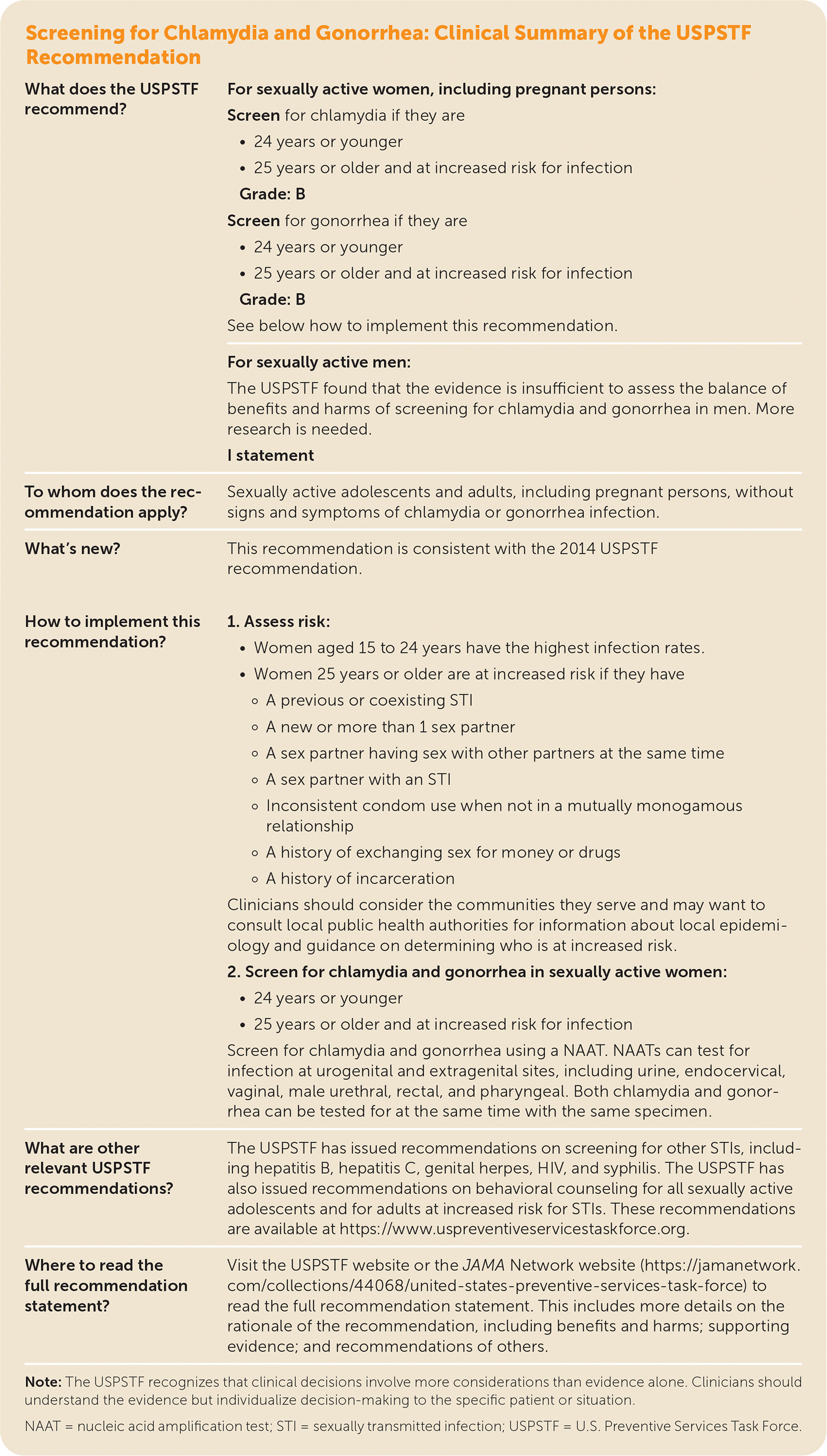
Am Fam Physician. 2022;106(1):online
Related Putting Prevention Into Practice: Screening for Chlamydia and Gonorrhea
As published by the USPSTF.

| What does the USPSTF recommend? | For sexually active women, including pregnant persons: Screen for chlamydia if they are
Grade: B Screen for gonorrhea if they are
Grade: B See below how to implement this recommendation. |
| For sexually active men: The USPSTF found that the evidence is insufficient to assess the balance of benefits and harms of screening for chlamydia and gonorrhea in men. More research is needed. I statement | |
| To whom does the recommendation apply? | Sexually active adolescents and adults, including pregnant persons, without signs and symptoms of chlamydia or gonorrhea infection. |
| What’s new? | This recommendation is consistent with the 2014 USPSTF recommendation. |
| How to implement this recommendation? | 1. Assess risk:
Clinicians should consider the communities they serve and may want to consult local public health authorities for information about local epidemiology and guidance on determining who is at increased risk. 2. Screen for chlamydia and gonorrhea in sexually active women:
Screen for chlamydia and gonorrhea using a NAAT. NAATs can test for infection at urogenital and extragenital sites, including urine, endocervical, vaginal, male urethral, rectal, and pharyngeal. Both chlamydia and gonorrhea can be tested for at the same time with the same specimen. |
| What are other relevant USPSTF recommendations? | The USPSTF has issued recommendations on screening for other STIs, including hepatitis B, hepatitis C, genital herpes, HIV, and syphilis. The USPSTF has also issued recommendations on behavioral counseling for all sexually active adolescents and for adults at increased risk for STIs. These recommendations are available at https://www.uspreventiveservicestaskforce.org. |
| Where to read the full recommendation statement? | Visit the USPSTF website or the JAMA Network website (https://jamanetwork.com/collections/44068/united-states-preventive-services-task-force) to read the full recommendation statement. This includes more details on the rationale of the recommendation, including benefits and harms; supporting evidence; and recommendations of others. |
The full recommendation statement is available at https://www.uspreventiveservicestaskforce.org/uspstf/recommendation/chlamydia-and-gonorrhea-screening.
The USPSTF recommendations are independent of the U.S. government. They do not represent the views of the Agency for Healthcare Research and Quality, the U.S. Department of Health and Human Services, or the U.S. Public Health Service.
